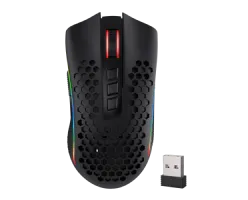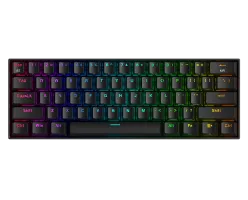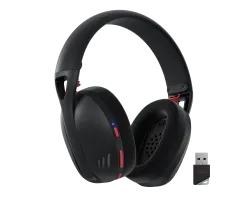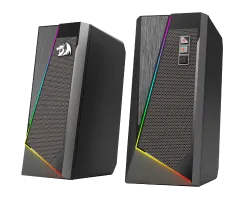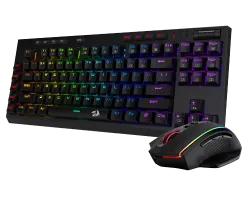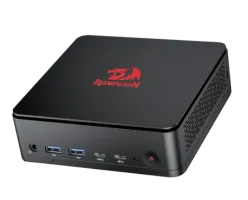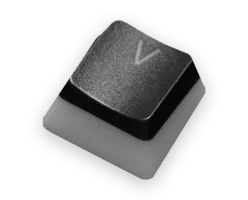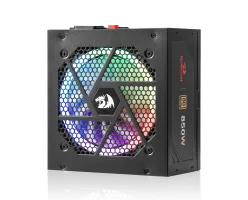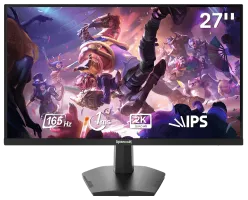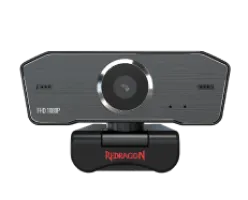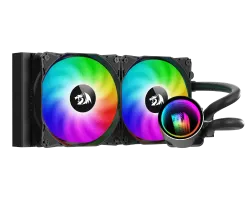Introduction
It’s easy to get overwhelmed by numbers if you’re new to the world of gaming mice, which can make purchasing decisions difficult. Typically, you see DPI numbers on product listings saying “30,000”, and whatnot. Honestly, you can largely ignore that number, as it’s possible for brands to set their sensor to a meaningless higher maximum DPI value that doesn’t actually affect performance!
In reality, some of the most important aspects of a gaming mouse are usually in its shape, weight/balancing, overall build quality, coating, switches, and button implementation. Notably, very few of these are in the title of the product listing, and it’s best as a consumer to do some research and look at multiple reviews to decide whether a product will suit you.
That being said, a high end, well-implemented sensor is still an integral part of a good gaming mouse. Thankfully, most but not all newer gaming mice have top tier sensor specifications and a solid enough implementation to back it up.

What Is a Mouse Sensor?
To put it simply, an optical sensor is essentially like a tiny camera, rapidly capturing images of your mousepad surface and translating that into cursor movement on your computer.
Who are PixArt?
PixArt Imaging Inc. is the leading provider of optical mouse sensor chips. Nearly every gaming mouse uses some sort of PixArt sensor.
PMW vs PAW Naming
PMW and PAW are both in the names of different PixArt sensors. Typically, many PMW sensors are designed for wired mice, while PAW sensors are designed for wireless mice. Nowadays however, both wired and wireless mice use the PAW3395 and PAW3950 sensors.
Sensor Specs
-
IPS (Inches Per Second) and Acceleration: Maximum sensor tracking speeds.
-
CPI/DPI: How many pixels per inch your cursor will move.
-
LoD (Lift-off Distance): The distance your mouse needs to be lifted to stop registering input.
What Is the PAW3395 Sensor?
The PAW3395 was a sensor released in 2022, with technology formerly exclusive to the Razer Focus+ Sensor. An improvement to the already amazing PAW3370, the 3395 sensor also provides a nearly flawless tracking experience. Unlike the 3370 however, the 3395 is capable of hardware Motion Sync, a feature that synchronizes your mouse sensor sending data with the PC receiving it, delivering more stable tracking at the cost of a miniscule amount of latency. In addition, most modern 3395 implementations are capable of higher Polling Rates than 1000hz, featuring 2000hz, 4000hz, and 8000hz settings in mouse software.
What’s the Deal with Polling Rate?
Polling Rate is how fast your mouse will send data to its receiver, and therefore to your PC. 1000hz literally means your mouse sends data 1000 times per second, which is 1ms of latency. Likewise, 8000hz would send data 8000 times per second, which is 0.125ms of latency.
Higher Polling Rates are possible on many new mice at the cost of battery life, although it’s difficult to notice any benefit over 1000hz with most setups. To really make use of this feature, a high Refresh Rate monitor is needed—ideally 360hz or higher. Even then, the tradeoff for battery life may not be worth it for many gamers.
But if you’re a competitive gamer and want every advantage possible, the ability to set your Polling Rate higher is just another piece of technology that may benefit you. In the end, there’s no downside to having this feature available, even when not in use.
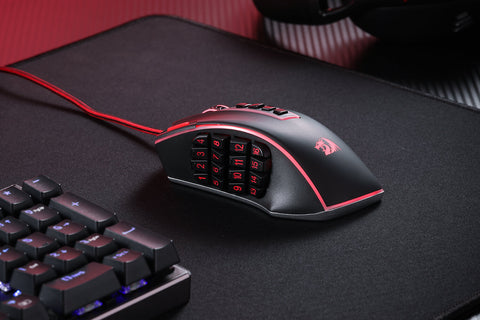
What’s New with the PAW3950?
The PAW3950 is a sensor released in 2024, also using technology formerly exclusive to the Razer Focus Pro Sensor. It’s extremely similar to the PAW3395 and one of its main spec upgrades (650 IPS vs 750 IPS) is negligible, as in use and even with testing equipment, these sensors never come close to this speed. For context, 650 Inches Per Second is already 16.51 Meters Per Second! Human arms can’t physically move mice that quickly. The 3950 also tends to have higher maximum DPI, but brands can already increase the DPI on both sensors far past their base 26,000 and 30,000 figures. Once again, this increase doesn’t actually affect anything.
However, a meaningful difference between these two sensors is in their LoD settings. The 3950 is capable of a minimum LoD of 0.7mm, as opposed to the minimum 1.0mm of the 3395. With this setting toggled, it takes less effort to lift and reposition the mouse when recentering after a flick, for instance. In addition, more LoD customization can help with surface compatibility, as some surfaces may not work well when set too low or too high.
If LoD isn’t too important of a feature for you however, then these sensors should both perform identically well, giving you a practically flawless experience.
PAW3950 vs PAW3395: Raw Specs
|
PAW3395 |
PAW3950 |
| Maximum DPI |
26,000 |
30,000 |
| Maximum Acceleration |
50g |
50g |
| Minimum Lift-off Distance |
1.0mm |
0.7mm |
PixArt Sensor Lineup Explained
Flagship Sensors
These sensors are on some of the best gaming mice on the market, as well as some cheaper mid-range gaming mice with top tier specs. They perform exceptionally well and have features mainly competitive gamers can make use of. These mice often feel buttery smooth in game, and are at the top of most recommendation lists. That being said, some of the weaker implementations on older budget mice may have performance issues on certain units, such as on the popular Attack Shark X3. They may feel worse to use than a good 3370 mouse.
Notable High-End PAW3950 Mice:
- Razer Deathadder V4 Pro
- Razer Viper V3 Pro
- Lamzu Maya X
- Corsair Sabre V2 Pro
- ASUS ROG Harpe Ace Extreme
- ASUS ROG Harpe Ace Mini
- ASUS ROG Keris II Ace
- Endgame Gear V2 Lineup
- Pulsar V3 Lineup
- Zowie DW Lineup
- Pwnage CF Lineup
- WLMouse Beast X Pro Series
- Vaxee E1
- G-Wolves HTS Ultra 8k
- ATK Duckbill
Notable High-End PAW3395 Mice:
- Finalmouse ULX
- Lamzu Maya
- Hitscan Hyperlight
- HyperX Pulsefire Haste 2 S/Pro
- Xtrfy M64
- Xtrfy M68
- Ninjutso Sora V2
- Endgame Gear V1 Lineup
- Pwnage StormBreaker
- WLMouse Beast X Series
- G-Wolves HTX Mini 8k
Notable Mid-End PAW3950 Mice:
- Scyrox V6/V8
- Teevolution Terra
- ATK F1 Extreme
- Razer Deathadder V3 (Pro)
- Razer Viper V2 Pro
- Razer Viper V3 Hyperspeed
Notable Mid-End PAW3395 Mice:
- ASUS ROG Harpe Ace
- HyperX Pulsefire Haste 2
- Pulsar V2 Lineup
- Glorious Model O 2 Pro
- Glorious Model D 2 Pro
- Fantech Aria II Pro
Notable Budget PAW3950 Mice:
- VXE MAD R Major
- Dareu A950 Wing
- Redragon M916 ULT
- Mchose L7 Ultra
- Zaopin ZPW
- Incott G23 V2
- Attack Shark R6
Notable Budget PAW3395 Mice:
Former Flagship Sensors
PMW3389, PMW3370
These sensors used to be top of the line, but the 3395 and 3950 sensors have largely replaced their presence in the market.
They are still excellent options and have performance comparable to the newer sensors, but without support for higher Polling Rates and usually no Motion Sync.
Some older mice may feature these sensors at a more affordable price.
Notable PMW3389 Mice:
- Endgame Gear XM1 RGB
- HyperX Pulsefire Surge
- Cooler Master MM710
- Xtrfy MZ1
- G-Wolves Skoll Mini
Notable PMW3370 Mice:
- Endgame Gear XM1r
- Endgame Gear XM2we
- Endgame Gear OP1we
- Xtrfy MZ1 Wireless
- Zowie CW Lineup
- Pulsar Xlite V2
- Glorious Model O Pro
- Glorious Model D Pro
- Fnatic BOLT
- Redragon M991
Mid-Tier Sensors
PAW3311, PMW3360, PAW3335
PixArt’s Mid-Tier sensors are mostly on older mice or budget-oriented options (in the case of the 3311), yet they still provide solid performance at a lower price.
While surface compatibility may pose some issues and their tracking may feel more floaty than the higher-end options, gamers on somewhat of a budget will likely be satisfied with their performance.
Notable PAW3311 Mice:
Notable PMW3360 Mice:
Notable PAW3335 Mouse:
Budget Sensors
PAW3327, PMW3325
These sensors are on much more budget-oriented, older mice. While they aren’t well suited for competitive gaming, a good implementation will perform well in everyday tasks and casual gaming.
Many cheaper mice featuring these sensors from unknown brands may not be so reliable, however. Be aware that cheaper mice aren't made to perform at a high level 100% of the time, so they might feel strange.
Mice with these sensors aren't very notable.
Sensor Implementation
A good mouse input experience isn’t just about the sensor itself, but also the way information from the sensor is processed. The MCU (Microcontroller Unit) is where this processing occurs, and brands often use different MCUs and firmware solutions. The most commonly used MCU among higher end mice is the Nordic nRF52840, which is essentially the gold standard.
Common MCUs in Mice
MCUs themselves don’t determine how good a sensor implementation is, but there’s usually a trend that’s followed:
- BK3633/CX52850 — Typically Lower End
- Realtek RTL8762GKH — Typically Higher End
- PixArt PAR2862QC/QN — Typically Higher End
- Nordic nRF52833/52840 — Consistently Higher End
Should You Upgrade from PAW3395 to PAW3950?
For just the sensor, it’s likely not worth upgrading. However, newer mice with the PAW3950 sensor may be appealing for their other aspects.
In addition, a poor 3395 implementation is definitely worth upgrading from. Mice with BK (Broadcom) MCUs in particular usually aren’t quite up to the standards of better implementations.
They may have issues with stuttering in game or a floaty feeling akin to a lower-end sensor.
Should You Upgrade to a PAW3395 or PAW3950 Mouse?
The PMW3389 and PMW3370 are still excellent sensors, but if you’d like to explore higher Polling Rates and Motion Sync, then perhaps consider a newer mouse, alongside whichever other features you’re looking for in a modern release.
For any sensors below those two (Mid-Tier and Budget options), I’d definitely recommend getting an upgrade for better latency and surface compatibility.
Mice with these sensors were also typically far heavier and worse in other ways, such as their coating and switch choices.
Redragon's 3950 / 3395 / 3311 Gaming Mice
Redragon’s 3950 Gaming Mouse – K1NG M916 ULT (8K Hz)
Experience ultimate precision with the K1NG M916 ULT. Equipped with the latest PAW3950 sensor, this mouse offers an incredible 30,000 Max DPI and Hype-Speed 8K Polling Rate for ultra-responsive gameplay. Weighing only 49g with an ergonomic natural grip build, it ensures comfort during long gaming sessions. Featuring 5 programmable buttons and 3 Modes Connect Tech, this mouse adapts to wired, wireless, and multi-device setups effortlessly. Ideal for competitive gamers who demand the highest performance.
Redragon’s 3395 Gaming Mouse – K1NG M916 PRO (4K Hz)
The K1NG M916 PRO brings flagship performance with the PAW3395 sensor. Boasting 26,000 DPI and a Hype-Speed 4K Polling Rate, it delivers precise and stable tracking for serious gamers. Weighing just 49g, the ergonomic design fits naturally in your hand, while 3 Modes Connect Tech allows seamless switching between devices. Powered by the Optimal Flagship Nordic Chip, this mouse guarantees consistent performance across all gaming scenarios.
Redragon’s 3311 Gaming Mouse – K1NG M916 STD (1K Hz)
The K1NG M916 STD is the perfect entry-level gaming mouse for everyday use or budget-conscious gamers. Featuring 24,000 Max DPI and a reliable 1K Polling Rate, it provides smooth and accurate tracking for casual gameplay. Maintaining the same ergonomic design and lightweight 49g build as its higher-end siblings, it supports 3 Modes Connect Tech for versatile connectivity without compromising comfort or performance.
Conclusion
While sensor performance isn’t the only factor in choosing a gaming mouse, it’s certainly an important one.
Ideally, you’d like to have consistent wireless performance with stable tracking from a PAW3395 or PAW3950 with a Nordic MCU or equivalent.
These implementations feel great in highly competitive scenarios, and are very dependable.
When on a budget, look for deals on PAW3370 mice, or potentially cheaper PAW3311 options if the floatier feeling, less accurate tracking is a compromise you're willing to make.
If you’re not a competitive gamer and need a mouse on a strict budget, mice with older, budget-oriented sensors like the PAW3325 and PAW3327 will still provide a large upgrade over most office mice in basic applications and casual gaming.
Some PAW3311 mice may also be extremely affordable, which would also provide a better experience on a budget.
Just be aware that these sensors may feel considerably worse in competitive gaming, and poor implementations can have connectivity issues as well.
Ultimately, whichever mouse you choose to purchase, make sure you do some research into how it performs.
FAQ
Are PAW and PixArt the Same?
Yes. PAW or PMW is usually in the name of the PixArt sensor.
What is the Best PixArt Sensor?
The current top of the line sensor is the PAW3950, although the PAW3395 offers extremely similar performance.
The main difference between the two is LoD settings (how much the mouse needs to be lifted before input stops registering), as the 3950 can go down to 0.7mm while the 3395’s lowest setting is 1.0mm.
This may also affect surface compatibility.
Are all PAW3395/3950 Mice the Same?
No. Mice each have different MCUs and firmware solutions which can drastically affect sensor performance and consistency.
Some mice may feel “off.” Make sure you keep these components in mind and check reviews.
What is the difference between the PAW3395/3950 and Hero/Hero 2 Sensors?
The original Hero sensor is based on the older PMW3366, which is a customized variant of the PixArt 3360 sensor.
The performance is still solid at the maximum 1000hz polling rate it offers and battery life tends to be excellent, but faster surfaces may have issues with spinouts.
The Hero 2 sensor fixes this problem, and offers better specs with true 8000hz polling rate. Battery life is still above average.
The PixArt 3395/3950 may have worse battery life, but actual performance is nearly flawless.
They’re on the level of the Hero 2 sensor with most solid implementations, and outperform the original Hero sensor.
Mice with these PixArt sensors can be significantly cheaper than the options with the Hero 2, although higher end 3395/3950 mice also exist at a similar price.
The Logitech G Pro X Superlight 2 with a Hero 2 is about the same base price as the Finalmouse ULX with a 3395 and Razer Viper V3 Pro with a 3950.
At the same time, budget 3950 mice can be around 3x cheaper, such as the Mchose L7 Ultra or Redragon's own M916 ULT.







